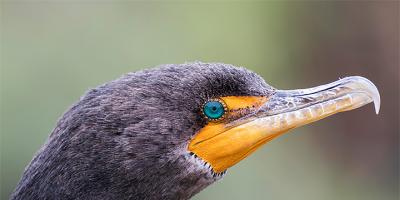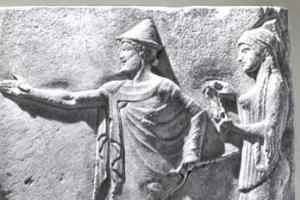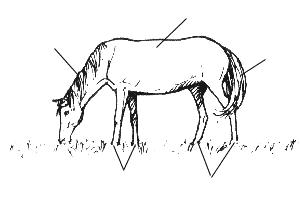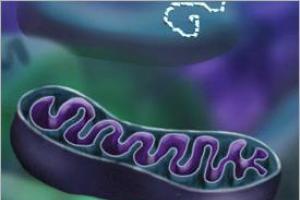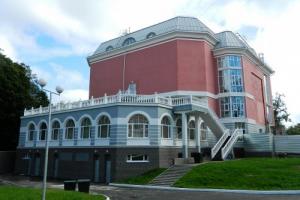The small water strider bug (Heteropteram) belongs to the order of predators and represents the family of Hemiptera. In total there are approximately 700 species of these insects. Judging by the description appearance water strider bugs, they have both differences and common features.
From the photo you can see what water strider bugs look like. They have a narrow brown body, elongated in length. Size from 1 mm to 3 cm. Zoology enthusiasts are often interested in how many legs a small water strider bug has. It has three pairs of legs that perform different functions. The front ones are the shortest because they are needed for capturing and holding food. The hind and middle ones are much longer than the body and are designed to live on the surface of the water. In the photo with water strider bugs, the difference in the length of the legs is clearly visible.
Their way of life
A large number of well-known species of water striders live in reservoirs: large, armored, velia, stick, small, etc. The large water strider reaches a length of about 17 mm. She has wings and a reddish body. Pond species about 1 cm long. It has a dark brown color, light legs, and black stripes on the front legs. At the same time, female pond snails have a red abdomen, and males have a black one.
The marine species is 5 mm smaller, but can move at speeds of up to 3.5 km/h. It lives in the Indian and Pacific Oceans and feeds on fish eggs. Insects are on open water, often several kilometers from land.
Scientists also found out where the water strider bug lives. It lives in bodies of water with a lot of vegetation. In this case, most often, water striders choose stagnant water, which has a very weak current. Most their lives they are on the surface of the water surface. There are also winged species that, if desired, can move to other bodies of water. Wingless individuals do not change location.
How do insects reproduce?
During reproduction, insects lay eggs several times, and according to a certain pattern. The female places them in a single row on the surface of plants growing in water bodies. At the same time, the water strider secretes mucus, with the help of which it attaches the eggs not only to the leaves, but also to each other. From a distance, a clutch of eggs, the number of which can be up to 50, resembles a long light cord.
During the mating season, males are very jealous of their territory and do not allow other males to approach the female. When an opponent appears, they begin to hit the water surface with their paws. Scientists claim that insects are able to control a large area in order to prevent a meeting with a so-called competitor. The male easily recognizes the sliding of his female through the water, so he will not attack her.
Some time ago, scientists established another feature of these insects. It turned out that they affect the reduction of the horsefly population. The fact is that horseflies lay their eggs in bodies of water where their larvae develop. Water striders feed on both fly larvae and adults. Moreover, an adult horsefly is too large for one insect, so it is usually attacked by several bugs at once. It was found that one bug will suck a horsefly for about an hour, while a flock will take only a few minutes.
Sometimes questions arise not only regarding who eats the water strider bug, but also why they dream. There are several authoritative dream books that can help solve the dream. These insects are very unpleasant, so many people believe that a dream with their participation warns of various troubles. Dream Interpretations agree with this opinion.
The love dream book claims that seeing bedbugs means impending troubles with your loved one. It is possible that he will lie to you a lot and show his two-faced nature. A large number of parasites is a harbinger of betrayal or an impartial act on the part of a partner.
No one can repeat the miraculous walk of Christ on water, except perhaps some representatives of the animal world... What forces help them?
Perhaps the most famous water runner is water strider bug. Almost all their lives, water striders glide along the surface of reservoirs in search of prey; only for the winter they move to land and hide in moss or under the bark of an old stump. But what is the secret of runners? Firstly, thanks to its low weight and size. Secondly, the entire body of the insect is covered with water-repellent fats, which do not allow the water strider to get wet. And thirdly, the thick-haired cover helps the bug stay afloat, especially on the tips of the legs, which have direct contact with water - on one square millimeter can grow up to 16 thousand hairs. The fur gets wet over time, and if it is not straightened and dried in time, the bug will instantly sink to the bottom.
Feels great on the surface of the water spinning beetle. The beetle's hind legs have been transformed into blades to increase running speed and maneuver sharply. Especially during the mating period, the spinners perform complex pirouettes and twists - the males, picking up speed, make a sharp turn under acute angle and slowly, like dudes in a cool car, they swim past the females, the latter responding with curls and spirals.

Fishing spiders also have a similar technique. A huge number of fibers on the insect’s body, covered with a fatty water-repellent layer, and very little weight allow spiders to easily glide across the surface of the water. Like water striders, spiders stay on the surface on three legs and a pair of legs serve as “oars.”

Larger representatives of the animal world, such as lizards, birds and dolphins, can also run on water.
Basilisks live near the shores of reservoirs, hiding in bushes and trees, but in case of danger, he resorts to his amazing ability - to run on water. It stays on the surface of the water thanks to frequent and short splashes. Contact with water lasts only 0.068 seconds. With each swing, the membranes between the toes capture a small amount of air, forming a special cushion that prevents the paw from getting wet. For this miraculous ability, basilisks are called “lizards of Jesus Christ.”

It is easier for birds to run on water than for lizards, since their wings create lifting traction, and the rapid movement of their wide legs helps. Very often, the water runway is chosen by those birds that move slowly and clumsily on land.
Before revealing the secret of water striders, it is necessary to remember some basics of the physical properties of water. As is known, the air and water environments are separated by a special film of surface tension. At the boundary of two phases, the attractive forces arising between water molecules are not balanced, i.e. the sum of forces acting downwards turns out to be many times greater than the sum of forces acting upwards. Due to this, the density of the water in the reservoir is slightly higher than in the main water layer.
But that is not all! Molecules tending downward lead to the appearance of a kind of elastic membrane that is capable of supporting objects with a density higher than this on the surface of the water. However, there is one condition: these objects must be dry. If you wet them, they will independently attract water molecules to themselves, which will disrupt the structure of the surface film.
It is curious that these amazing physical properties of the water film are used for their own purposes by various. It is worth moving from physics to zoology. As is known, on the border of two habitats it has a very noticeable advantage. The most famous inhabitants of the surfaces of reservoirs are, of course, water striders.
Who are water striders?
These are small insects from the order Hemiptera. Simply put, these are bedbugs. Like their relatives, water striders are equipped with piercing-sucking oral apparatus(proboscis), which allows the introduction of special substances into the body of its prey that paralyze and decompose its tissues. This is necessary in order to suck the finished “broth” out of the victim.
Water striders are predatory creatures. Their main food is insects that accidentally fall on the surface of the water. If the future meal is large enough in size, then several water striders can feast on it at once. However, these creatures prefer to hunt and feed alone.
How does a water strider stay on the water?
This simple ability of water striders is explained by the above physical properties water. This is due to the so-called surface tension force. If we briefly retell the essence of this “trick,” we get the following: in the boundary layer between the air and the water column there are water molecules, which are acted upon from below (from the depths) by a force several times greater than from above. Because of this, a thin membrane is formed on the surface of the water. It is she who holds the water strider, which happily conducts its life activities.
The water strider is a bug whose name reflects its lifestyle. These insects live in ponds, lakes and quiet rivers. There are also sea water striders. These bugs move along the surface of the water and do not drown thanks to the fatty film that covers their paws. There is also a layer of fat on the abdomen. In addition, water has surface tension, and it is largely due to this that water striders are held on its surface. The paws of this insect evenly distribute its weight over the surface of the water, which holds the light water strider with its density.
There are about 700 species of these bugs. The water strider has a narrow, elongated body, which allows it to move quickly. The insect's body length is from 1 to 3 centimeters. The water strider also has 3 pairs of thin legs of varying lengths. The front pair of paws is short compared to the other two - the water strider uses these paws to capture prey. Thanks to the remaining two pairs of paws, the water strider can glide through the water. This bug also has a pair of antennae on its head - these antennae help to detect the smallest vibrations in the water. Some water striders also have wings. Wingless water striders do not leave their native pond all their lives. Lake and river water striders do not move far from the shore of a reservoir, while sea water striders can cover distances of hundreds of meters. These insects do not live alone - at least 3-4 bugs can be found on the surface of the pond. Water striders feeding small insects- midges, caterpillars, mosquitoes. During the breeding season, water striders lay eggs, the number of which can number 50 pieces. The eggs hatch into larvae that feed on the same food as adults.



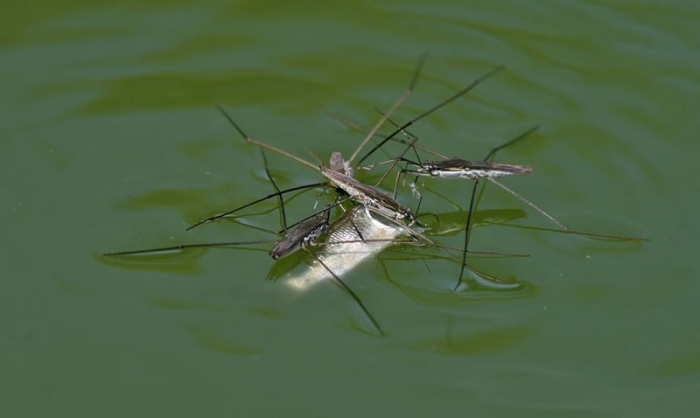
Video: Mating dances of pond-scaters
If you have ever been on the banks of rivers with a slow flow, stagnant ponds or lakes, you have probably seen amazing insects on excessively long, thin legs. They easily glide through the water, as if on an elastic film, deftly managing three pairs of legs. These are water striders, aquatic relatives of the large family of bugs.
Portrait in a water interior
The appearance of aquatic insects is very different from their land relatives. The body of the water strider is long, elongated, resembles a boat or a stick, ranging in size from 1 to 3 centimeters.
The color is dim, from light gray or greenish to dark brown. The lower part of the back usually has a speckled pattern. Most species have membranous wings hidden under hard elytra. The back of the water strider has a protective coloring, which helps it not to stand out against the background of the bottom.
Three pairs of legs different in length, middle and back more sizes body by one and a half to two times. The front legs are the shortest and are used to regulate the speed of movement, as well as to capture and hold prey.
The middle and rear ones resemble oars or skis; they hold the bug on the water, are used for sliding and turning, and sometimes for jumping. All paws are equipped with small hairs-villi.
The head is small, with large round eyes and antennae that pick up vibrations in air and water. The insect uses them for touch and smell.  The water strider's small head has a proboscis and large round eyes.
The water strider's small head has a proboscis and large round eyes.
The oral apparatus is a sharp, jointed proboscis. With its help, the water strider pierces the victim's body and sucks out nutrients.  When the water strider is not hunting, it tucks its proboscis close to its body.
When the water strider is not hunting, it tucks its proboscis close to its body.
About 700 species of these insects are now known. Common for Russian reservoirs is Prudovaya (Gerris lacustris). There are also Big (Gerris rufoscutellatus), Armored (Gerris thoracicus), Velia (Velia currens), Stick (Hydrometra gracilenta).
The largest species found on our territory - Bolshaya, reaches 1.7 cm in length, the most cold-resistant - Velia lives in the northern regions, and can settle in cold springs. The rod has a narrow, elongated body, is common in Siberia, and moves its legs alternately when moving. This is the slowest water strider.
Life expectancy, stages of development
Mating occurs right on the water, in the warm season. A week after fertilization, females lay eggs on the stems or leaves of aquatic vegetation. Masonry large species It is a long ribbon of eggs glued together with mucus. Small ones lay single eggs, not treated with mucus.
 Mating occurs on the water
Mating occurs on the water Laying is carried out under the vigilant protection of the male. He jealously controls the surrounding space, scaring off potential enemies by hitting the water with his paws.
At one time, the female lays 40 to 50 eggs. They are whitish cylindrical, up to 1 mm in size. A week later, yellowish larvae (nymphs) emerge from the eggs, which gradually darken. The nymph resembles an adult (imago), but is more rounded.  The water strider larva is similar to the adult, but more rounded and smaller in size.
The water strider larva is similar to the adult, but more rounded and smaller in size.
The larvae develop within a month, feeding on small insects. During this time, they go through 5 stages of development and end with molting. The folded abdomen, filled with food, straightens out.
The next breeding cycle occurs in mid-summer. At this time, insects of different ages are found in the reservoir.
Insects overwinter on the shore, finding a secluded place under stumps or in moss. Before this, they shed their wings, which no longer grow back after wintering. The full life cycle of water striders lasts a year.
What do water striders eat?
Water bugs are predators; they feed on aquatic inhabitants, small invertebrates, and will not miss the opportunity to feast on fry and fish eggs. But the basis of their diet consists of insects that have fallen into the water or flew close to the surface.  A butterfly that falls into the water becomes prey for water striders
A butterfly that falls into the water becomes prey for water striders
There have been cases when insects sucked the blood of people, but this is very rare.
Bedbugs have excellent vision, thanks to which they notice the victim from afar and rush to the place where it falls, capturing and holding it with their front paws. Having pierced the insect with a sharp proboscis, the bug injects a digestive enzyme inside, which liquefies the flesh of the prey, which it then sucks out.  The water strider injects the victim with a digestive enzyme and then sucks out the insides
The water strider injects the victim with a digestive enzyme and then sucks out the insides
Video: how a water strider hunts
Even horseflies can become victims of water bugs. If the prey is too large, the insects form groups to hunt together. After killing, the meal continues for an hour.  The water strider grabs and holds prey with its front paws
The water strider grabs and holds prey with its front paws
Danger and benefit for humans
Water bugs in our latitudes do not pose a danger to humans; it is not part of their diet. You can swim in reservoirs inhabited by water striders without fear.
In rare cases, water strider bites are possible, but they are practically painless and have no unpleasant consequences. The only danger is that microorganisms living in the reservoir can penetrate into the wound through the bite. Therefore, the bite site should be treated with a disinfectant composition: brilliant green, chlorhexidine, hydrogen peroxide.
The harm that bedbugs can cause to humans is by eating fry and eggs of valuable fish species. But if the population is small, the damage from such a feast is insignificant.
Tropical varieties can cause more serious problems. In addition to the proboscis, they also have a more formidable weapon - a stinger. Their bite is painful, comparable to a wasp sting, and the affected area goes numb. Painful sensations can persist for an hour, after which they pass. There is a danger of an allergic reaction to the secretion, in which case it is necessary to take an antihistamine.
The insects themselves can be beneficial; they regulate the number of horseflies by feeding on eggs laid in the water and attacking adult individuals. Eating dead insects and small animals, they act as orderlies, freeing the reservoir from carrion.
Water strider bugs are a necessary link in the ecological chain, so there is no point in fighting them. They perform important role cleaners of reservoirs, without causing harm to humans and animals.
The insects themselves become prey to fish and birds. To protect against predators, bedbugs are equipped with a protective coloring - the color of the back is always dark, which makes them difficult to distinguish from above against the background of the bottom of the reservoir. The abdomen is always light, allowing it to be invisible from below against the sky.
The structure of the water strider's legs is interesting. They are completely covered with tiny hairs that hold air bubbles microscopically. It is this, and the length of the widely spaced limbs, that allows it to stay on the water using surface tension.  The special structure of the legs allows the insect to move through the water and not drown
The special structure of the legs allows the insect to move through the water and not drown
The abdomen is also covered with hairs lubricated with wax. It prevents you from getting wet and allows you to always stay afloat. Try to drown an insect, you are unlikely to succeed. But the body immersed in liquid looks silvery due to small droplets of air.
Despite their wings, water striders prefer to remain on the water surface and are reluctant to fly. But the inhabitants of large puddles or drying up lakes can fly to a more suitable place for living.
But they are excellent jumpers. Pushing off long paws, they leapfrog over the obstacles they encounter along the way. Their speed of movement is also amazing. In one second, a small insect can cover a meter of surface, which is comparable to the speed of a pedestrian.

